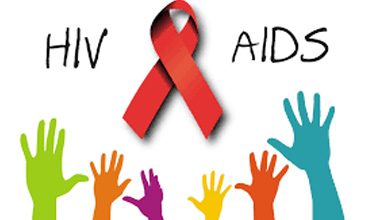Risk Factors for Contacting HIV/AIDS among Health Care Workers in Peri Uban-Hospitals in Kumasi, Study Conducted at Suntreso Hospital

Abstract:
Health workers are vulnerable to
occupational exposure to contagious substances and stand the risk of acquiring
life threatening disease. The study assessed risk factors for contracting HIV
AIDS by healthcare workers in the three Peri-Urban Hospitals in Kumasi. The
study was quantitative employing cross-sectional survey. Data was collected
from 210 randomly selected healthcare workers from the three hospitals who were
directly involved in given medical care to patients. Questionnaire and
interview were the instruments employed in data gathering. The questionnaire
was administered; key informant interview was conducted among healthcare
practitioners. Study revealed that HIV AIDS transmission in the hospitals
emanates from several factors. The major cause of HIV AIDS transmission was
found to be percutaneous exposure. The items measuring percutaneous exposure
all had high mean scores and relative importance indexes above 50%, indicating
that they are risk factors. Injuries from needle and sharp devices contributed
80% of the risk. The study identified modifiable factors found that promotes
HIV AIDS transmission in the hospitals to be, non-use of safety devices,
complacency, inattentiveness, negligence, and health and safety delivery rules
and policies. The study discovered that healthcare workers exposed to the risk
factors receive inadequate post exposure prophylaxis. A single dose therapy
regimen is administered to healthcare worker who have encountered percutaneous
and mucocutaneous exposures. The study provides useful information to hospital
authorities and health personnel to work in an
environment risk-free. Systematic risk factors, particularly percutaneous
exposure should be a prime concern to healthcare practitioners in the
hospitals.
References:
[1]. Akwara, P. A., Madise, N. J. and Hinde, A. (2003), Perception
of risk of HIV/AIDS and sexual behaviour in Kenya, J. biosoc. Sci. Vol. 35, p.
385–411
[2]. American
Journal of Nursing (2000). Nurses Win Protection Under New OSHA Regulations.
Vol. 100 (2), p. 20.
[3]. Amoran, O. E.
(2014), Occupational Exposure, Risk Perception and Access to Prophylaxis for
HIV/AIDS Infection among Health Care Workers in Northern Nigeria, British
Journal of Medicine & Medical Research,Vol. 3(2), p. 275-287.
[4]. Amosu, A. M.,
Degun, A. M., Makinde, C. M, Thomas, A. M. and Babalola, A. O. (2011), An
assessment of specific knowledge and attitude of healthcare providers towards
people living with HIV/AIDS in Ibadan, Nigeria, Annals of Biological Research,
Vol. 2 (2), p. 255-264
[5]. Buston, R. W
and Engelkirk P. G. (2000). Microbiology for the health sciences, 6th edition,
Lippincolt Williams and Wilkins.
[6]. Cambridge, M. A. (1996), ‘Status and trends of the HIV/AIDS pandemic: the Global AIDS Policy Coalition’, Harvard School of Public Health, François-XAVIER Bagnold Center for Health and Human Rights.
[7]. Centres for Disease Control and Prevention (1995), Case-control study of HIV seroconversion in health-care workers after percutaneous exposure to HIV-infected blood: France, United Kingdom, and United States, January 1988-August 1994. MMWR Morbidity Mortality Weekly Rep Vol. 44, p. 929-933.

